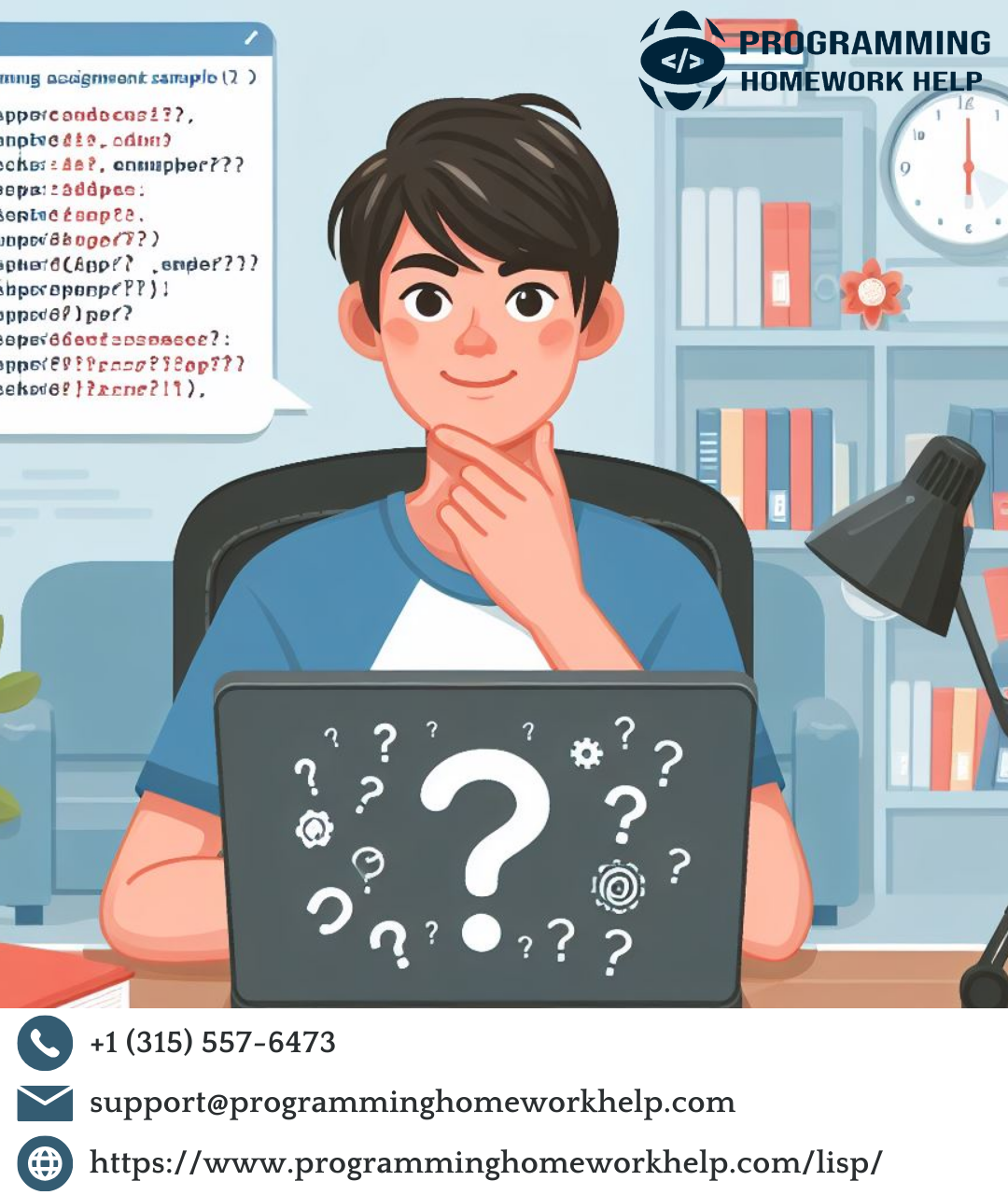Welcome to ProgrammingHomeworkHelp.com, your go-to destination for mastering Lisp programming and excelling in your assignments. In this comprehensive guide, we'll delve into the intricacies of Lisp, explore its core concepts, and provide expert solutions to master-level programming questions. Whether you're a beginner or an experienced programmer, our Lisp assignment help service is here to assist you every step of the way.
Lisp, short for "LISt Processing," is a family of programming languages known for their unique approach to computation through symbolic expression manipulation. Originating in the late 1950s, Lisp has remained relevant and influential in the world of programming, particularly in the domains of artificial intelligence, symbolic computation, and language processing.
Understanding the Fundamentals of Lisp Programming
At the heart of Lisp lies its fundamental data structure, the list. Lists in Lisp can contain any combination of atoms (symbols or numbers) and other lists, allowing for powerful and flexible representation of data. Let's take a closer look at some basic Lisp expressions:
;; Define a list of numbers
(setq numbers '(1 2 3 4 5))
;; Define a list of symbols
(setq fruits '(apple banana cherry))
;; Define a nested list
(setq nested '(1 (2 3) (4 (5))))
In Lisp, functions are first-class citizens, meaning they can be assigned to variables, passed as arguments to other functions, and returned as values. This functional paradigm enables elegant and concise solutions to a wide range of programming problems.
Lisp Programming Questions and Solutions
Now, let's put our Lisp skills to the test with a couple of master-level programming questions:
Question 1: Flatten a Nested List
Given a nested list, write a Lisp function to flatten it into a single list. For example, (flatten '(1 (2 3) (4 (5)))) should return (1 2 3 4 5).
(defun flatten (lst)
(cond
((null lst) nil)
((atom lst) (list lst))
(t (append (flatten (car lst)) (flatten (cdr lst))))))
Question 2: Calculate Factorial Using Recursion
Write a recursive Lisp function to calculate the factorial of a non-negative integer. For example, (factorial 5) should return 120.
(defun factorial (n)
(if (<= n 1)
1
(* n (factorial (- n 1)))))
Leveraging Our Lisp Assignment Help Service
At ProgrammingHomeworkHelp.com, we understand the challenges students face when grappling with complex programming assignments. That's why our Lisp assignment help service is designed to provide personalized assistance tailored to your specific needs. Whether you're stuck on a challenging problem or seeking guidance to elevate your skills, our team of experienced programmers is here to support you.
Our process is simple yet effective. Just submit your assignment requirements, and our experts will craft custom solutions that not only meet but exceed your expectations. With our dedication to quality, timeliness, and affordability, you can trust us to help you achieve academic success in Lisp programming and beyond.
Conclusion
In conclusion, mastering Lisp programming is a rewarding journey that opens doors to endless possibilities in the world of computing. By understanding its fundamental principles, tackling challenging problems, and leveraging the support of our Lisp assignment help service, you can elevate your skills and unlock new opportunities in your academic and professional endeavors.
Ready to embark on your Lisp programming journey? Contact us today and let ProgrammingHomeworkHelp.com be your trusted companion every step of the way. Together, we'll turn your programming aspirations into reality.
